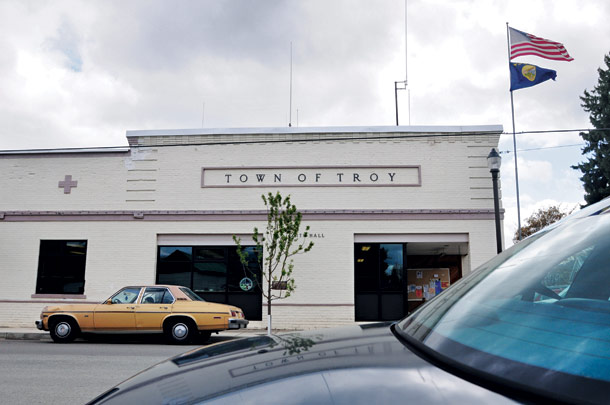The history books that chronicle the life and times of Montana are littered with towns that didn’t quite make it; communities that fizzled out before putting down solid roots.
For many communities, their prospects were tied to the boom and bust cycles of the mineral industry. When prices were good, miners from across the country would rush to an area hoping to strike it rich. But when the mineral deposits were gone or the values dropped, prospectors would pack their wagons and hit the dusty trail.
That is very much how the story of Troy could have ended. The first miners arrived in 1886 and set up a tent camp at the mouth of Lake Creek, just south of where the town is today. But unlike other mining camps that disappeared into the pages of history, Troy survived and this month it celebrated its 100th anniversary with a series of events on Sept. 12 and 13.
After those first miners set up camp near where Lake Creek meets the Kootenai River, they found their mineral claims were bountiful and more prospectors beat the path to the area. That path to Troy was soon widened in 1891 when the Great Northern Railway built its rapidly growing transcontinental line through town. The construction of steel rails cemented the community’s future and the following year the city’s first lodging house, the Windsor Hotel, was built. In June 1892, the town of Troy was created within the boundaries of Missoula County, which at the time encompassed most of western Montana. A few months after the hotel went up, Libby postmaster J.P. Bowen built the first house there.
The town grew even faster beginning in September 1892, when the Great Northern built a rail yard in Troy, complete with a station, roundhouse, coal chute and living quarters. The combination of rowdy railroaders and mischievous miners made Troy a hot spot for those looking for a good time. A visitor once described the scene in detail, writing, “Such sights and sounds that met the eyes and horrified the ears of this young woman from the east, were spectacular to say the least. Fifteen saloons gaily lit filed to the doors with ‘wild men and wild women’ yelling, singing, dancing, and cursing, with glasses held high, such was Troy.”
Troy’s rowdy ways would continue for another two decades until 1915, when it decided it should and become a real town. In July of that year it voted to incorporate and on Sept. 9 the city council met for the first time. U.S. Highway 2 was also constructed to Troy that year and by the end of 1915 more than 350 people called it home.
By the 1920s, the timber industry began to grow and within a few years its population grew to over 1,000 residents. By 1923, Troy was the richest town in Lincoln County. Its population peaked a few years later at 1,300 residents. The Great Depression and a series of fires took a toll on the town in the 1930s, but through the years it has persevered and today about 950 people live there. Mayor Darren Coldwell said considering all the other communities that have come and gone, it’s amazing that Troy has made it more than a century. He attributed that success to its people.
“The people make this place special,” Coldwell said. “There have been many ups and downs over the years.”
